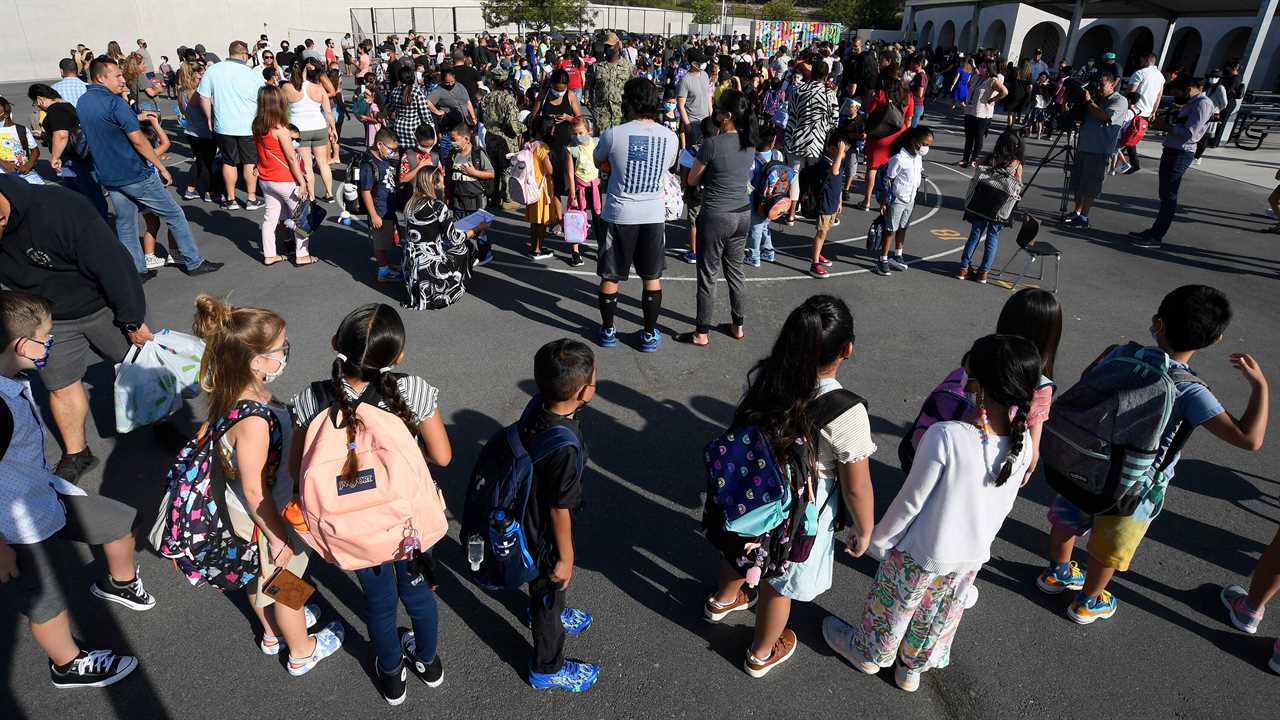
A new study of hundreds of Black educators, students and parents found that Black students will be returning to the classroom this fall with disproportionate amounts of trauma and heightened mistrust of education, resulting from the coronavirus pandemic and continued instances of racial injustice.
The study, released this month by the Black Education Research Collective at Teachers College, Columbia University, conducted online surveys and focus groups from January through May in six major U.S. cities to map the impact of the coronavirus on the education of Black youth. Participants included high school students, parents, teachers, educational administrators and community leaders who ranged in age from 14 to over 70 and all identified as Black.
According to the report, governmental and institutional responses to the coronavirus, police brutality, anti-Black violence and uprisings like the Jan. 6 insurrection at the U.S. Capitol have caused further “erosion of trust in schools and institutions” by Black Americans.
The response to the insurrection, which delayed the certification of the 2020 election results, caused almost 80 percent of respondents to trust institutions less, according to the study. The response to the pandemic eroded the trust of almost 70 percent of participants.
“For the Black experience in America, you know, for many people this is just more of the same,” said Sonya Douglass Horsford, an associate professor of education leadership at Columbia’s Teachers College and an author of the report.
Although systemic racism has been and will continue to be a problem, she said, the study provides an opportunity for people and institutions to change their response.
Ninety-one percent of respondents said they had been negatively affected by the increased visibility of white nationalism and police violence. Ninety-three percent reported that they were worried about the Jan. 6 riots at the Capitol and the increased visibility of white supremacy. Nearly one-third indicated they were “extremely worried” about their safety and the safety of their loved ones.
The research also showed that Black Americans continue to worry about the pandemic and the country’s medical response to it.
According to the Centers for Diseases Control and Prevention, Black Americans are 2.8 times as likely to be hospitalized for Covid-19 as white Americans are, and twice as likely to die from the disease. Black Americans also saw a steeper drop in life expectancy during the pandemic than white Americans did.
Sixty percent of respondents said they lived with an essential or frontline worker who performed a job in unsafe conditions. Nearly one-third of all survey respondents had lost a family member, a friend or a neighbor to Covid-19. About one-third of the survey participants faced job insecurity, and over 50 percent experienced employment status changes, according to the report. The level of loss, along with uncertain pandemic responses, negatively affected the mental health of about 86 percent of participants.
“The compounded effects have just really been a lot,” Dr. Horsford said.
For Anthony A. Jack, an assistant professor of education at Harvard University, the compounded effect goes beyond the events of the last 18 months: They are a direct result of longstanding racist policies such as redlining.
Professor Jack, who was not involved in the study, said the importance of the research lay in its potential to move the discussion of what racism looks like beyond the stagnant conversation about racial epithets.
“The lasting legacy of racism — you understand how it shapes your everyday interaction and shapes opportunities,” Professor Jack said. “It shapes your mental health.”
But “despite school districts preparing to open their physical school buildings safely in the fall,” the report said, “they remain unprepared to educate Black students effectively while ensuring their safety and well-being.”
“For years we’ve talked about reimagining education and reinventing education. And we actually have a window by which we can do that,” Dr. Horsford said.
The report notes that the “separate and unequal” design of schools keeps them “ill-equipped” to teach and take care of 7.7 million Black students at nearly 100,000 public schools in the United States.
In order to rebuild trust, the study’s authors wrote, leaders should begin to view students, parents and educators as “equal partners in education.” The report recommends using funds allocated to schools by the American Rescue Plan — nearly $122 billion — to respond to the academic and mental health needs of Black students.
Some of these solutions include simply investing in school infrastructure and hiring more Black teachers to update school curriculums to better understand Black history in the United States.
“I see the timing as really being great to pose a set of solutions and research-based recommendations that could help local communities — including students and parents and those who are reflected in the study — to put forth a set of recommendations for how those dollars should be spent,” Dr. Horsford said.






